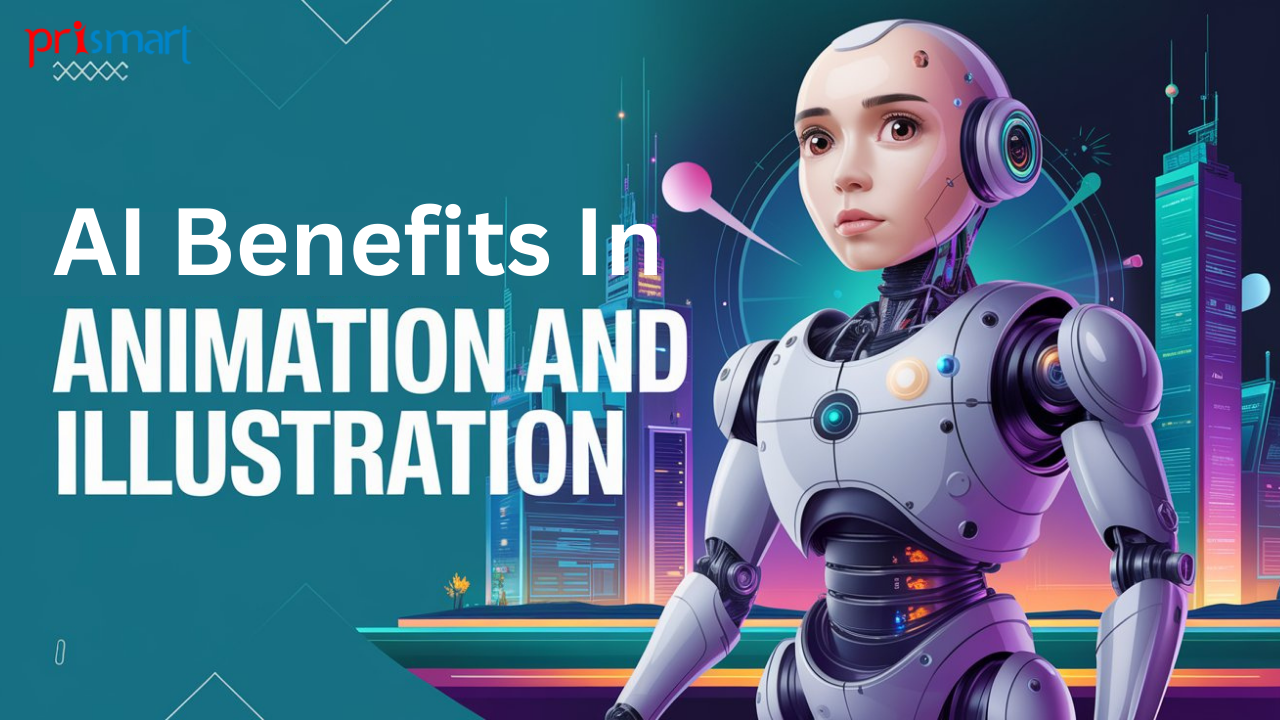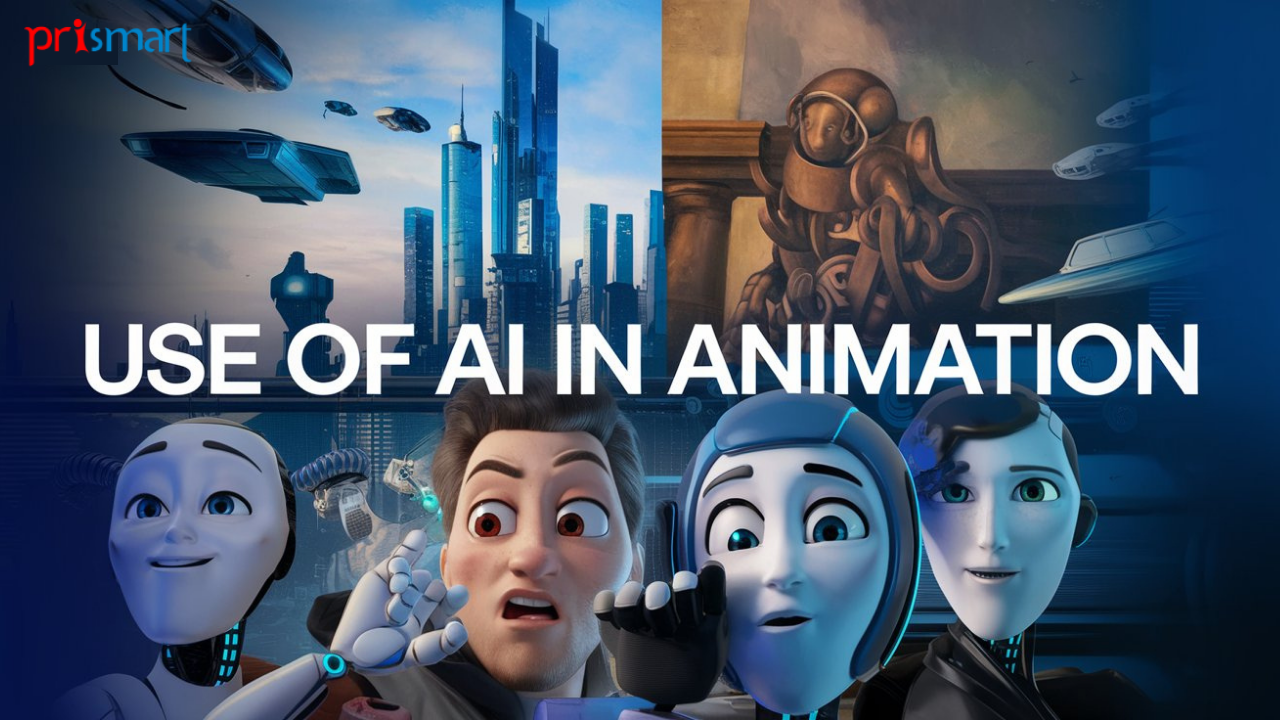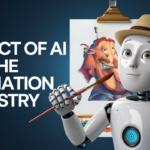Artificial intelligence has completely changed the animation production process. Whether character animation, virtual scene creation, or overall video enhancement, AI in animation has proved to be an asset for all studios out there trying to push the boundaries of creativity and offer something unique to their target audience. AI is also reshaping how animators work. In this blogpost, let’s explore the impact of AI on the animation industry and secrets of using AI for best results.
AI-Powered Character Animation
One of the most significant advancements brought by AI is character animation. It creates realistic and emotionally engaging characters with natural movements, human expressions, and physical gestures. In contrast to AI, traditional animation techniques often require painstaking attention to detail and countless hours of work. This leap in technology not only enhances visual appeal but also opens doors for more immersive and emotionally engaging storytelling experiences.
AI-Generated Virtual Environments
Using machine learning and generative AI technologies, animators can design realistic scenes and virtual environments. These advancements are particularly beneficial in the gaming industry, where AI is used to create vast, detailed virtual game environments that foster engagement and enhance player interaction .
Benefits of Using AI in the Production Pipeline

AI not just enhances the final output but optimizes the entire animation process. Here’s how AI seamlessly streamlines the production process.
- Automating tasks: AI saves time and improves production quality by handling intensive processes like rotoscoping, background generation, and facial animation, giving animators the freedom to be creative at their best.
- Improves Efficiency: Integrating AI in the animation process improves the efficiency and quality of work. Whether it is lip syncing or facial animation, AI-powered tools transform the way animators work.
- Enhancing Quality: AI algorithms can be used to generate high-quality and realistic textures, lighting, and shading. Plus, it can also point at any inconsistencies in any part of the animation, such as character movement, audio-lip sync, and lighting.
- Expanding creative possibilities: With AI, it becomes easy to generate animations based on a specific style of art, such as pixel art or anime. AI is definitely a powerful tool for the animators, enabling them to try out every style of animation.
The Changing Role of Animators
Due to the growing influence of AI on animation, it has become essential for animators to adapt to the new animation technologies and hone their skill sets.
According to a report, the estimated growth rate for animators is expected to be 5% to 8%. But with an increasing demand for animators, there’s also an amplified demand for their expertise. Let’s talk about how animators are expected to be by the companies.
Animators should be proficient in using the latest AI tools and programming languages to not just enhance their work and give it quality but also to stay ahead in the competitive world.
They should be able to strike a balance between their creative vision and artificial intelligence, not either depending too much on it or leaving it behind.
They should adapt themselves to the demands of the animation industry by learning AI tools while retaining traditional animation techniques.
Use of AI in Animation

The impact of AI in animation extends to several industries:
Pharmaceutical Industry: With AI created 3D animation models, it has become easy to visualize and understand complex medical surgeries and human anatomy. This leads to effective communication and medical outcomes.
Gaming Industry:AI in the gaming industry is employed to create high-quality character animation, body movements, virtual environments, and give gamers a mesmerizing gaming experience.
Education Industry: Interactive, AI-generated e-learning modules make learning more engaging and fun across various subjects.
Architecture and design: AI is utilized to create realistic 3D visualizations of buildings and spaces. With AI, you can speedily demonstrate the interior and architecture of your client’s salon, restaurant, hotel, workspace, etc.
Animation Industry: Concept generation, storyboards, animated characters, realistic facial expressions, natural body movements, virtual worlds, character voice overs, AI automates all these tasks in animation with utmost precision.
The Scope of AI
AI has become an integral part of the production pipeline. More companies are realizing the power of AI and training their employees to use this trendy technology. As we look ahead, the possibilities for AI in animation seem limitless. We can expect to see:
- AI algorithms that create personalized animated content.
- Enabling animators to experiment with its AI features and speed up the production time.
- Acting as a creative partner, offering suggestions in work and inspiring new ideas to animators.
Conclusion
Integrating AI into the animation industry marks the onset of an era of creativity and efficiency. AI tools allow animators to push the boundaries of their art form, creating more immersive, realistic, and emotionally immersive experiences for target audiences.
With Prismart Production, you can now avail high-quality 3D animation services. We offer the best prices, fast TAT, and high-quality outputs that meet your expectations. Understanding the changing trends in animation, our 3D animators are well-adapted to the AI tools and cutting-edge technologies, ensuring our delivery meets modern-day demands.




